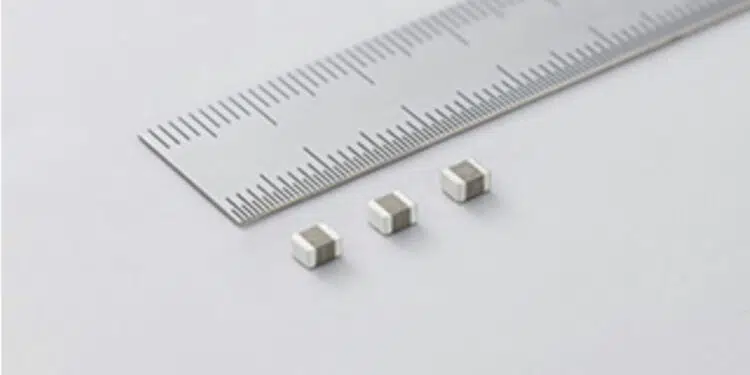Murata announces the availability of the DFE32CAH_R0 series of high current SMD metal power inductors for high-temperature applications of up to 150 °C for in-vehicle applications featuring major improvements in Isat and RDC specifications.
Intended for use in DC/DC converters and power management circuitry for automotive applications, these components are supplied in 1210 inch size (3.2 mm × 2.5 mm) metal cores. Covering a wide inductance value range, the components are suitable for in-vehicle applications beyond infotainment systems to the powertrain and advanced driver assistance systems (ADAS).
Meeting demands for high currents and the downsizing of system designs, the DFE32CAH_R0 delivers a DC superimposed current rating (Isat) of 8.7A in the world’s best for a SMD 1210 inch size product with an inductance of 0.47 µH.
The DFE32CAHR47MR0L has a 0.47 µH inductance value, with an RDC of 14 mOhm (Max) and an Isat of 8.7 A (Max). For the DFE32CAHR68MR0L, the main values are 0.68 µH for inductance, 17 mOhm (Max) for RDC and 7.0 A (Max) for Isat. The 1.0 µH-rated DFE32CAH1R0MR0L and 1.5 µH-rated DFE32CAH1R5MR0L have respective RDC values of 22 mOhm and 30 mOhm, with Isat figures of 5.9 A and 4.8 A. The DFE32CAH-2R2/3R3/4R7-MR0L inductors have respective inductance ratings of 2.2 µH, 3.3 µH, and 4.7 µH with RDC figures 43 mOhm, 67 mOhm and 101 mOhm and Isat values of 4.0 A, 3.3 A, and 2.8 A. For additional details, please see the data sheet.
“These new products support large currents by optimizing the internal coil structure design and utilizing original metal materials,” explains Tomohiro Yao, General Manager of Marketing & Promotion for the EMI Division at Murata. “Thanks to these technological advances, we have succeeded in delivering a series of small metal power inductors that have a highly reliable design for a more diverse range of automotive applications, including the powertrain and ADAS, that require support for temperatures up to 150 °C and demand large current flows.”
































